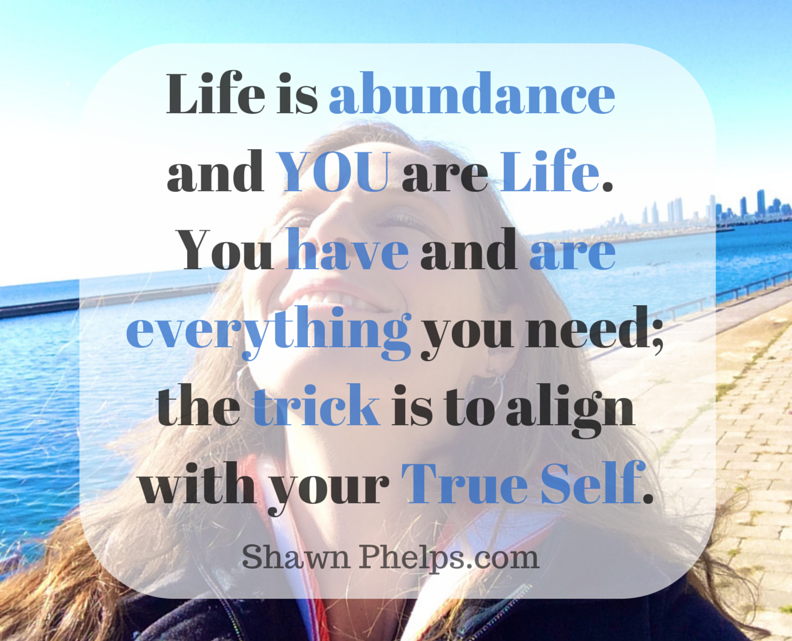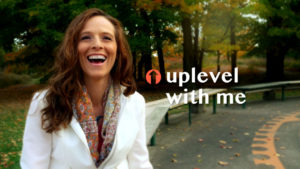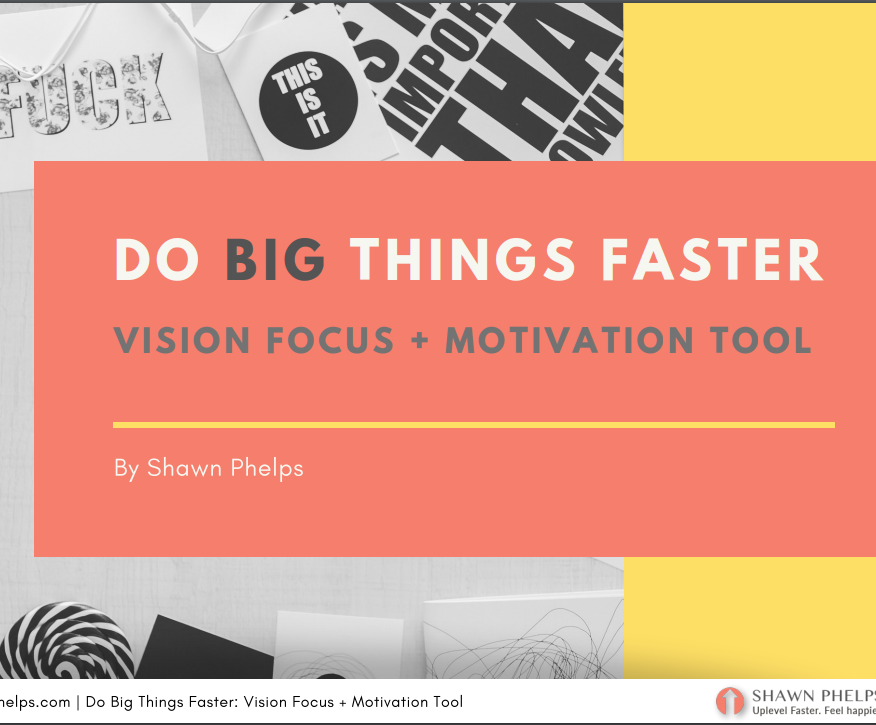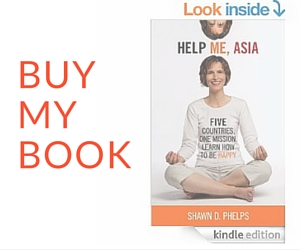This post is part 2 of a two-part series: an in-depth guide to abundance.
Part 1. Are You Practicing The False Abundance Mindset?
Part 2. The True Abundance Mindset That Creates Genuine Happiness
If you’ve actually tried to practice “abundance”, you’ve probably noticed it usually doesn’t lead to the results you were hoping for. This is because there are two versions, false abundance and true abundance, and most people are practicing the wrong one.
Last week we explored the false version, but there’s one more important thing I’d like to add. You can’t practice abundance with a scarcity mindset.
So, if you’re desperately pretending to be grateful for what you have now with the INTENTION of attracting things you don’t have, that’s not an abundance mindset, because you still believe that your life will not be complete until you have all those OTHER things you’re trying to manifest. (Been there, done that, got the t-shirt.)
Now, onto the good stuff. How can you make this thing work for you?
First, What is Abundance?
Life is naturally Abundant, meaning it provides itself with everything it needs to thrive. To understand this, picture a rainforest or a coral reef. It is remarkably interconnected and self-sustaining.
You are one element of the “whole” that is Life—so YOU are also a source of abundance. This means there is a continuous dance happening between YOU and Life. I know that’s tough to get your head around, so let me explain it another way.
Think of Life as a river full of possibilities. When you wade into that river many things are possible, but only to the extent your energy resonates with those possibilities. Belief plays a role here (i.e. The Law of Attraction), but, in my work helping clients align with their purpose, I’ve uncovered an important factor new-agers ignore when they’re going on about “unlimited possibilities”. Fortunately, anyone with common sense already knows what I’m about to say is true.
You were born with certain natural talents and inclinations (to learn more glance at the Life Purpose Roadmap I create for my clients), each of which has a particular resonance. Also, during your formative years, your lizard brain (amygdala) decided which of these were most important for your survival, then turned up the volume on it. These talents and inclinations play a BIG role in what is, and what is not, possible for you on this river. That’s why it’s so important to uncover what these are. Otherwise you end up wasting time chasing after experiences that don’t resonate with who you really are (your True Self).
What is this “River of Life”?
It’s kind of like the dark matter that holds the universe together. Or what Buddhists call “the formless”. Everything arises from it and returns to it. And it connects everything in our lives, carrying us from one experience to the next.
What Powers My Journey on this River?
Two things push you forward toward new experiences on your river journey:
- The desire/intention of Life itself “the whole” (of which you are a part) to grow, evolve and thrive in a sustainable, interconnected way (like a rainforest).
- The desires/intentions of the unique character that is “you”. (But which you? The river will respond to your True Self and your False Self equally. So, if you’re having too many experiences you don’t want, the latter is probably behind the wheel.)
As you might guess from the above, the more you align your desires/intentions (2) with Life’s desire/intention (1), the more genuine happiness and success you are likely to experience.
While it’s entirely possible to manifest desires/intentions that don’t align with supporting “the whole”—as we explored in the last post—eventually #1 will kick back in and reassert itself (and that’s never pleasant). So, from a practical standpoint, it’s going to be more fun for you in the long run if you take #1 into account when choosing the experiences you’d like to create.
Four Tools to Experience More Abundance
There are four main tools that will help you experience more abundance. Plenty has been written about why they work from an energetic standpoint on other sites. My two cents is that these tools will strengthen your True Self (the source of your best life) and diminish your False Self (which will see little value in these tools).
- A Clear Vision
- Trust in Life
- Gratitude
- Giving
1) A Clear Vision
Where would you like this river to take you and why? If you don’t make this clear for yourself, Life can’t take you there. Write it down and post it somewhere you’ll see daily. It’s also helpful to visualize it in your mind. Whether you realize it or not, your intentions are directing where you go on this river. This is not just some “spiritual” idea. Ask any successful CEO how they got to where they are; I guarantee it was because they had a clear vision of where they wanted to take their company and what role they wanted to play in that.
2) Trust in Life
Trusting in Life means embracing the idea that it always provides everything we need to grow toward our highest potential, which often includes many Turning Points (experiences) we don’t like or want. We are here to learn and grow and, through that process, to remember who we really are—our True Self. It is the False Self that craves safety and control.
The truth is, your False Self will never allow you to fully trust in Life. And that’s okay. It will always be there in the background insisting this “trust” thing is bullshit. Your job is to:
- set out your intention/desire to trust and do your best. Even if you can hold just 5% trust alongside 95% skepticism, you’ll be doing better than most.
- make a conscious effort to choose thoughts that reflect this intention to trust.
Thoughts That Reflect Trust and Allow Abundance
For years I kept reading that if I wanted to experience abundance, I had to get out of my own way and “allow” it. I had no idea what that meant. But then I received this useful piece of advice—choose “downstream thoughts” rather than “upstream thoughts”—and it all came together.
If you’ve ever swam in or canoed on a river, then you know it’s a lot easier to go downstream than upstream. Yet, most of us constantly fight with Life, argue with reality, and feel angry and sorry for ourselves that we aren’t where we think we should be on that river. Every time we throw one of these internal or external tantrums where we argue with Life (whatever is happening right now), what we are actually doing is trying to swim upstream. Or, as Byron Katie so beautifully put it: “When I argue with reality I lose—but only 100% of the time.”
Choose Downstream Thoughts
These are thoughts that create calm rather than tension; they work with the river rather than against it. Instead of trying to manipulate people and situations, or frantically trying to figure out how to make everything work (then feeling angry because it isn’t), it’s more useful to focus on doing what we can while trusting that the river will take us where we need to go, even if we’re not there yet. Note that the laws of physics still apply; you must actually make a consistent effort to swim or paddle if you intend to get anywhere.
Avoid Upstream Thoughts
These are thoughts that create tension rather than calm; they work against the river instead of with it. Most of us don’t trust that Life will take us where we most want to go. So we try to control everything. We try to manipulate people and situations because we believe we have no choice. If you’re anything like me, you’re always trying to figure out how to make things work. It’s good to have a plan but if too much energy is focused on “How can I make sure this works?” you’re probably not focusing enough on just doing the work from a state of trust and allowing. (E.g. If you spend all your time researching how to publish and market your book instead of writing the thing, odds are it’ll never happen.)
Why Should I Trust Life When It’s So Hard?
Imagine your favourite novel or movie. Does everything work perfectly for the main character? If so, why would you bother to read the book? What makes the story interesting is the tricky plot and how the character evolves as he/she moves through different Turning Points. It is usually the character arc (how the character learns deeper self understanding that allows he or she to operate at a higher level) that makes for a good story.
It’s the same with your life story. If you could have and be everything you want all at once, it would be boring. Ask any billionaire. They constantly search for the next rush or conquest, because it’s hard for them to appreciate or enjoy anything in life. As Tom Hanks says in the movie A League of Their Own, “It’s the hard that makes it good.”
Of course, it’s a lot easier when you swim downstream instead of upstream. Another great tool that will help you do this is Gratitude.
3) Gratitude
When I suggest using gratitude as a tool, I’m not just talking about writing down five things each night that you happen to be grateful for. I mean working hard to feel grateful for not only what you have, but also for who you are, every minute of every day.
I’m sure you’ve already read 100 articles on things to be grateful for, so let’s deal with the missing link: feeling grateful for who you are.
Deep down, most of us believe there’s something wrong with us; that we need to be or do something more before we can give ourselves the love and approval we crave. We compare ourselves to others and think, “If only I could be more like them, I would actually enjoy being myself.” But this isn’t true. The more you try to be like other people, the less you will experience true abundance. Abundance is an inside job.
Who You Really Are: A Story
There is a true story, told by Jack Kornfield in one of his books, about a large clay and dirt Buddha in Thailand, repaired and repainted for hundreds of years. One day, they noticed some deep cracks and were about to fill them when they saw a flash of gold underneath. As it turns out, it was made of pure gold but had been covered to protect it from being stolen.
We are like that Buddha; we are born as pure gold—abundantly happy just to suck on our fingers and play with our toes. We loved being ourselves, and woke up each day with insatiable curiosity about our world. But then we were assimilated into our “tribe”. We learned that we had to hide our enthusiasm, imagination, feelings and ideas from the judgment of others. We learned to cover our authentic selves with layers of dirt and clay to protect us.
As we chip away these False Self layers, we see more of the True Self gold shining through that was always who we really ARE, and we begin to genuinely enjoy being ourselves again.
Of course we all want to experience new things, and that’s wonderful. “Wanting” is the engine of evolution. But there’s a “big hairy lie” we all tell ourselves: that we’ll finally be happy once we have something else, are something else or are doing something else.
The truth is: you can only be happy when you decide to love yourself and your life as it is; when you recognize that the value of your life is in the magic and mystery of the unfolding of your life story.
4) Giving
As I mentioned in the last post, The True Abundance Mindset is an ongoing participatory dance of sharing. It’s not just something you create for yourself; it’s a complex existing system to which you contribute what you can and take what you need. It’s about supporting the health of the “whole” ecosystem of which we are a part.
As you uncover who you are, share what you’ve learned with others. The river acts as a mirror—it can only give to us if we are giving of ourselves to others. When we are all giving of ourselves into our shared ecosystem of Life, we create the world we’ve wanted since the day we were born.
So What Am I Supposed to Do Again?
Write out a clear vision of what you want and why (and do your best to make sure it’s aligned with what “Life” wants and with what your “True Self” wants), practice trust and gratitude, share what you’ve learned with others and stop worrying so much.
Forget about trying to be like this person or that person (and that includes copying someone else’s business), and become committed to exploring what it means to be more fully yourself. Live your own damn story.
Make a daily effort to enjoy being whatever character you happen to have been born as. Try not to take your “character” so seriously. (It’s a temporary gig.)
Stop trying to control the future and, instead, be excited to see what might happen next.
Life is abundance and YOU are Life. Therefore, you ARE abundance itself. You have and are everything you need, the trick is to align with your True Self. That’s where all your power lies.
Above all, remember that your worth lies in your existence as a living thing—Life expressing itself as something so unique that it will never again be replicated. That’s YOU.
The more you “get this”, the better you will feel and the more true abundance you’ll experience. It’s a feedback loop.
It’s not easy, but it does work. And it does lead to genuine happiness. And, yes, that’s based on my personal experience.




